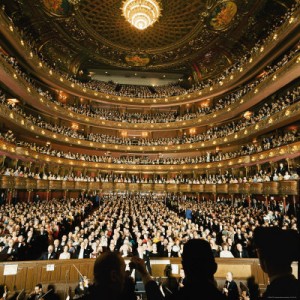 My previous two posts dealt with different aspects of price discrimination, and since many future posts will cover the topic from various angles, I think it worthwhile to go over a few basic ideas and definitions.
My previous two posts dealt with different aspects of price discrimination, and since many future posts will cover the topic from various angles, I think it worthwhile to go over a few basic ideas and definitions.
Marginal cost will be defined here as the cost to your arts organization of serving one more customer. It might be one more person through the turnstiles of your museum, one more person taking a seat for your performance or festival. For the examples just given, marginal cost might be very close to zero – it costs nothing at all to let in that last person. For many commercial products in the arts, like books and cd’s, marginal costs are low but not zero – it still costs something to make and ship one more unit of the physical object.
Reservation price represents the most money an individual is willing to pay for what you have on offer. For almost every arts offering, for the majority of people reservation price is zero – they won’t come even if they don’t have to pay a dime. It’s important to think about how, at least for some of those no-shows, their minds might be changed. But I’m going to leave that problem to other bloggers who know more than I do, and here we will focus our attention on those people willing to pay something above marginal cost for what you offer, even if it is a very small amount more.
Members of your audience have different reservation prices. Price discrimination is about finding ways to get individuals to pay an actual price that comes close to their reservation price (remember, no one will pay more than their reservation price, by definition). The problem is difficult because, as an arts manager, you don’t know what an individual’s reservation price is as they come to your ticket window. You cannot read minds, you cannot look it up. You might know something about reservation prices across the population: for example, you might be able to make a good guess that if the Cowboy Junkies perform at your venue and prices are $55 per ticket and you are looking at a Friday night in October you are likely to sell about 600 tickets in your town. You build experience and keep track of how similar acts have sold before and you develop some intuition. But you don’t know whether the man in the red shirt in line at the box office is someone with a reservation price of $60 or $300. All you know is he is willing to pay at least $55.
There are three classes of price discrimination.
First-degree price discrimination is charging each individual a different price according to your estimate of his or her reservation price. It is rarely used in the arts, although you may have experienced it when buying a used car off a lot (the seller will bargain with the sticker price according to her perception of your reservation price), or in meeting with the admissions office of a college, where financial aid and the effective price of attendance is often negotiated on a family-by-family basis.
Direct price discrimination is more common, and involves setting different prices for different groups of consumers according to some reasonably easily identifiable trait. Examples are discounts for students, seniors, veterans, those on social assistance, those who reside within a particular geographic area, and so on. In general, application involves figuring out demand patterns for each of your groups – students and non-students, for example – and for each group setting the price that will maximize net revenue. There are some limitations. The larger the price differential between the two groups, the more incentive there is for cheating: non-students will seek fake student identification, or students will buy tickets and re-sell to non-students. Pharmaceutical companies price discriminate by charging different prices in different countries, but that has involved their pursuit of legislation preventing high-paying Americans from importing their drugs from elsewhere. Publishers also price discriminate across countries, giving some students incentives to buy cheap, ship, and sell dear.
Indirect price discrimination is also common, and somewhat more subtle. It involves offering all consumers a range of purchase options – a menu of prices – allowing individuals to sort themselves into purchases that reflect their reservation prices. In a previous post I noted that coupons giving discounts at retail stores are available to all, but only low-reservation-price careful shoppers tend to take advantage of them. Differential prices according to quality are also a form of indirect price discrimination – we all see the same prices for hardcover and paperback books, or for orchestra and balcony seats, and we choose according our own reservation prices (which might be hardcover and orchestra for some artists, paperback and balcony for others). Quantity discounts and memberships are another form of indirect price discrimination. Two-part pricing, where customers are charged something of an “entry fee” and additional charges for extras is another form of indirect price discrimination.
Direct and indirect price discrimination are not mutually exclusive – almost all arts organizations do some of each.
Each of these we will cover in more detail with examples. But we had to start somewhere…
Footnote: Direct price discrimination is also called third-degree price discrimination, and indirect is called second-degree. As a student I could never keep these two straight, so I will stick with direct and indirect.

[…] the previous post we set out the basic idea behind price discrimination: your potential audience has different […]